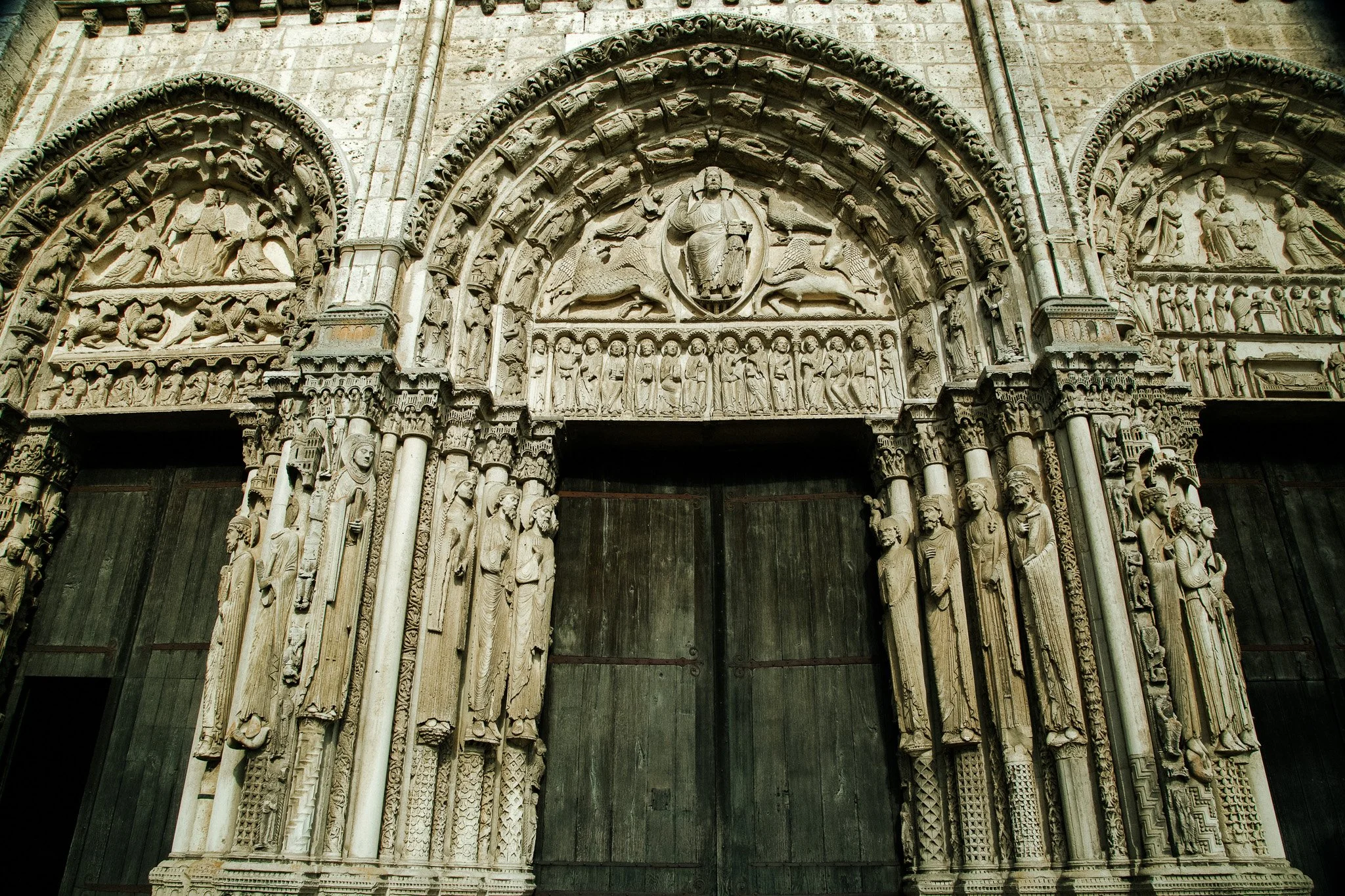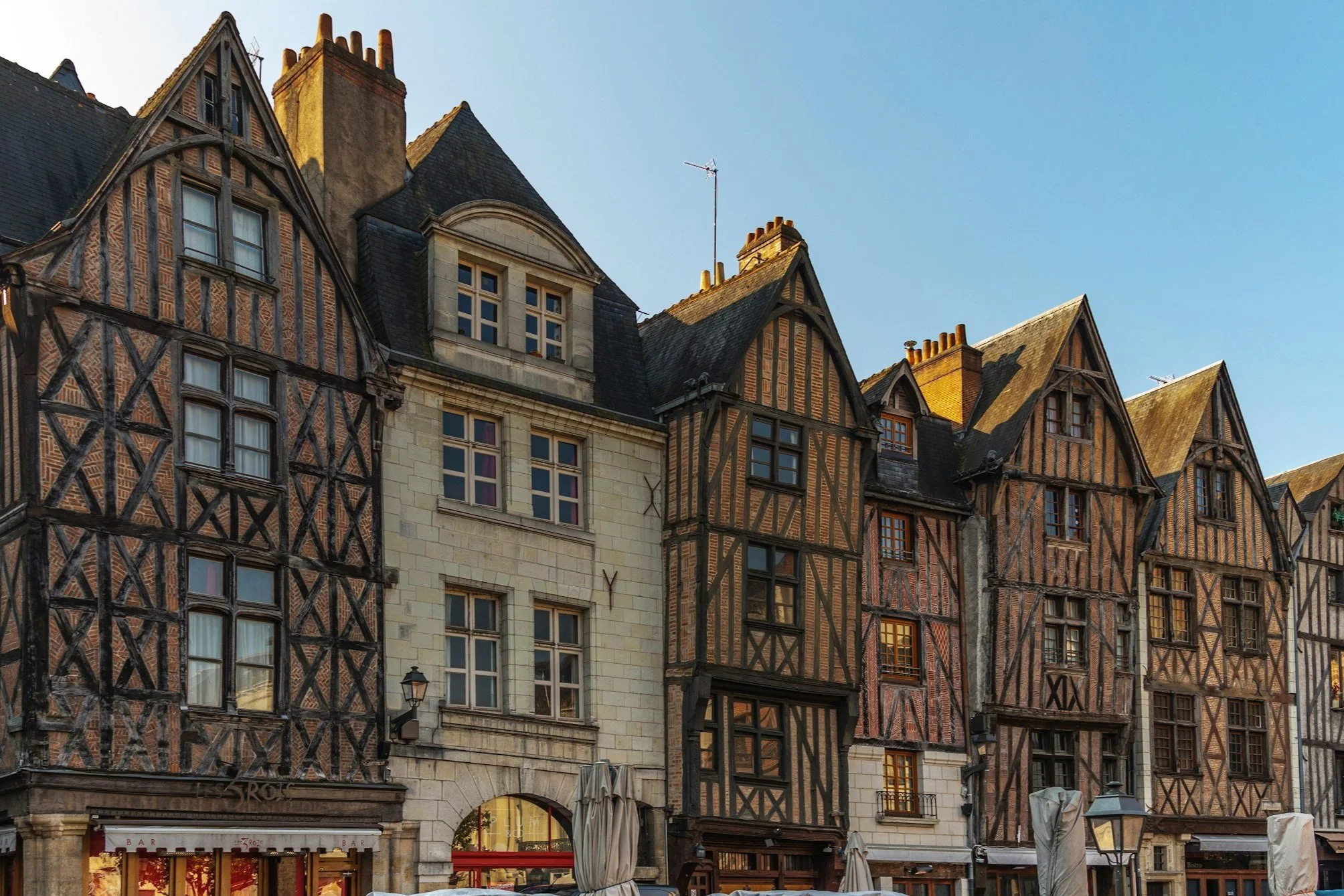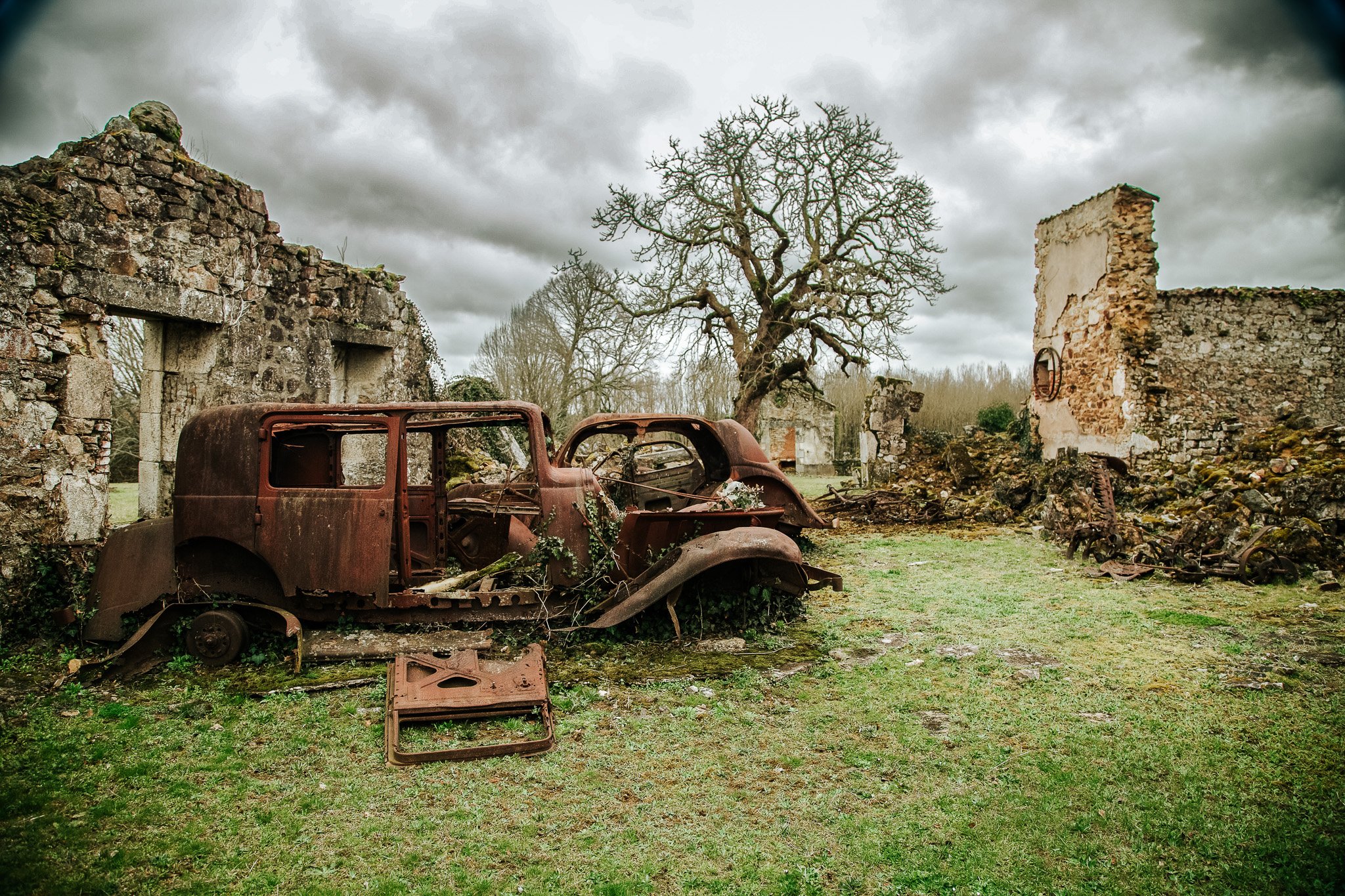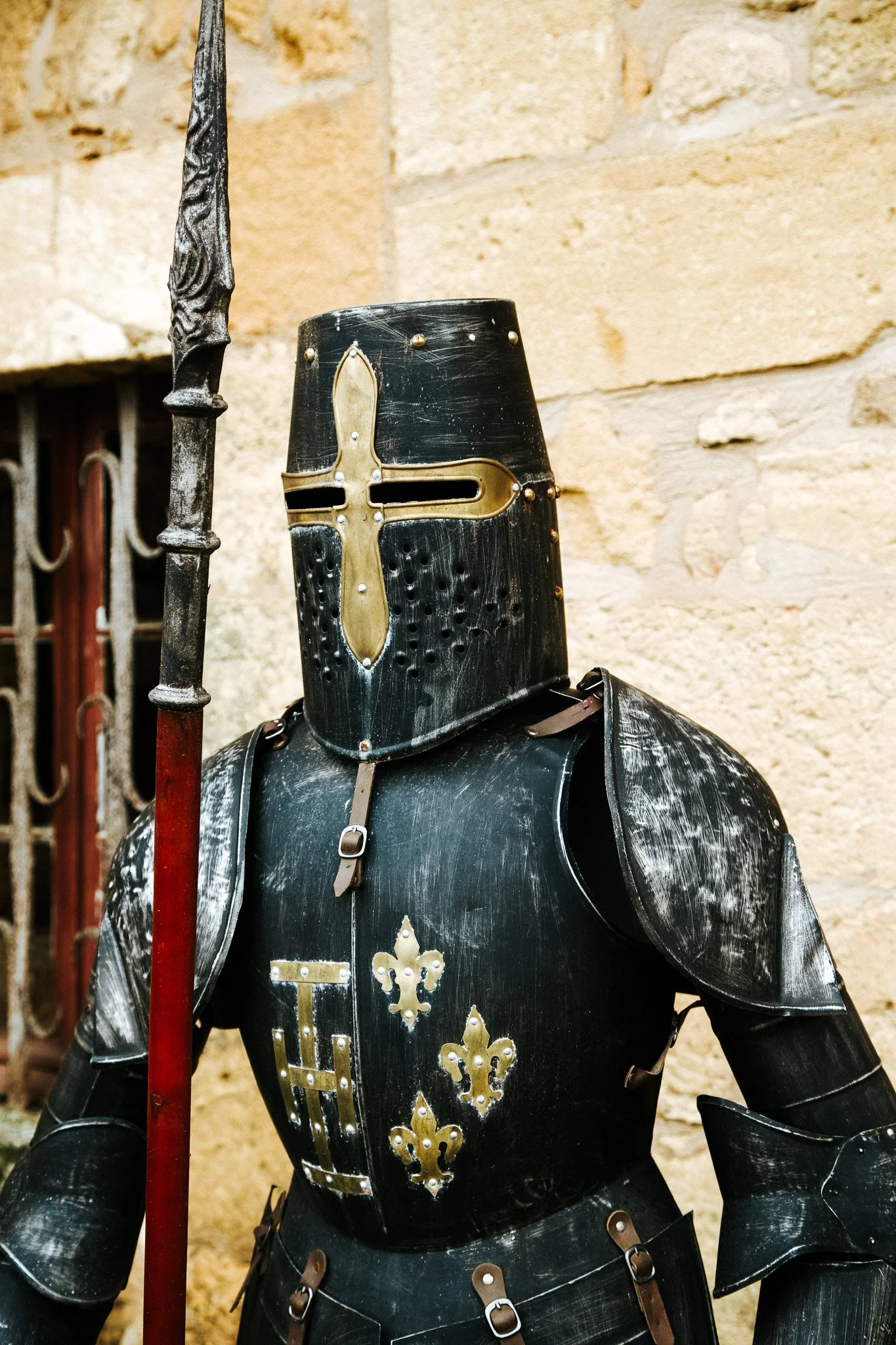
on the spot
central france for teens and adults
chartres
Loire valley
limonges
Lascaux
.
Dordogne
Oradour sur glane
périgueux
tours
Quick resources to view in chartres
Chartres Cathedral, also known as the Cathedral of Notre-Dame de Chartres, is a breathtaking masterpiece of Gothic architecture located in the town of Chartres, France. Construction began in 1194 and was completed in just 26 years. The cathedral is famous for its stunning stained glass windows, which are among the finest in the world, and its unique labyrinth, where pilgrims once walked to reflect and pray.
One intriguing feature of Chartres Cathedral is its two spires, which differ in style. The north spire is a soaring Gothic design at about 377 feet, while the south spire is built in a simpler Romanesque style, topped with a conical shape. This difference arises because the south spire was completed in the 12th century, before the Gothic style became prominent, while the north spire was rebuilt after a fire in 1220.
Chartres Cathedral has endured many challenges, including the Hundred Years’ War, where it became a symbol of hope for the people. During World War II, local citizens and clergy bravely protected the cathedral from destruction by hiding artifacts and using clever deception to convince the Nazis of its insignificance.
Today, Chartres Cathedral stands as a powerful symbol of endurance and faith. Its stunning architecture and rich history continue to draw visitors from around the world, reminding us of the courage and determination that have preserved this incredible treasure throughout the ages.Smarthistory: Chartres Cathedral 18:55
.
What is Gothic Architecture? 5:23
France: The Cathedral Chartres 24:52
Rick Steve: The Age of Faith in Stone and Stained Glass - Article
Rick Steves: Pure Gothic Cathedral 2:46
1000 Years of Stained Glass in Five Minutes 4:50
Smarthistory: Gothic Architecture Explained 4:30
Cathedrals and Universities 12:29
quick resources to view at the loire valley
The Loire Valley is a magical place in France often called the “Garden of France” because of its stunning landscapes filled with vineyards, beautiful gardens, and grand castles! This region is famous for its impressive châteaux, like the majestic Château de Chambord and the elegant Château de Chenonceau, which spans the Loire River like a fairy tale bridge. Originally, these castles were built in the Middle Ages for protection against invasions, serving as strongholds for noble families. However, as peace returned to the region, they transformed into magnificent status symbols that showcased the wealth and power of their owners.
The Loire River itself played a significant role in history, acting as a dividing line between different territories and often becoming the site of conflicts, especially during the Hundred Years’ War between France and England. Control of the river was crucial for trade and military strategy. The valley also saw the rise of important figures, such as King Francis I, who commissioned many of the grand castles we admire today and helped make the Loire Valley a center of art and culture during the Renaissance.
One of the most fascinating stories from the Loire Valley is about the great artist and inventor Leonardo da Vinci. In 1516, Leonardo traveled over the mountains from Italy to France on a donkey, bringing with him the famous Mona Lisa, which was unfinished. He was invited by King Francis I, who welcomed him with open arms, recognizing Leonardo's incredible talent and hoping to learn from him. Leonardo spent his last years in the beautiful Château du Clos Lucé, where he created amazing inventions and artwork that would influence generations to come. Today, visitors can explore the enchanting castles, wander through lush vineyards, and enjoy delicious wines, making the Loire Valley a perfect blend of history, beauty, and adventure!Rick Steves: France’s Loire Valley Chateau Country 25:04
Chenonceau: The Ladies Chateau 17:12
Chambord: Five Eventful Centuries 12:18
How did Leonardo Da Vinci End Up in France? 1:27
Rick Steves: Chateau de Chenonceau 2:33
Rick Steves: Villandry France Chateau Gardens 1:57
Chateau Royal d’Amboise 3:23
Royal Rivalry - Article
Rick Steves: Chateau du Clos Lucé
Cheverny: Nobility Through the Ages 6:53
Rick Steves: Chateau de Chambord 4:05
.
Da Vinci’s Epic Journey from Italy to France 5:40
.
quick resources to view at Tours
Welcome to Tours, a captivating city in France that takes you back to the medieval period! Founded during the days of the Roman Empire, Tours flourished in the Middle Ages as a vital center for culture and learning. The stunning Saint-Gatien Cathedral, with its intricate stained glass windows, showcases the city's architectural brilliance and took over three centuries to build.
In the 9th century, Tours became home to the Abbey of Saint Martin, where dedicated monks preserved ancient texts, ensuring that knowledge thrived. During the Hundred Years’ War (1337–1453), Tours played a strategic role due to its location along the Loire River, making it a key point for the movement of soldiers and supplies. The city witnessed many knights and nobles passing through its streets, each with their own stories of bravery and adventure. Today, you can wander through the medieval streets of Tours, lined with charming half-timbered houses and bustling markets like Place Plumereau, where echoes of the past come alive. With its rich history and vibrant culture, Tours is a magical place that brings the medieval period to life!Secret of Tours 3:42
.
Half Timbered Buildings 5:11
City Life in the Middle Ages 6:36
Medieval Townhouses 3:28
The Battle of Tours 8:30
Six Myths of the Middle Ages 4:48
quick resources to view at oradour-sur-glane
Oradour-sur-Glane is a small village in France that has a powerful story to tell. During World War II, on June 10, 1944, a terrible event happened here. Soldiers from the Nazi army came to the village and, in just a few hours, destroyed it and hurt many of the people who lived there. The villagers were gathered together, and sadly, many were taken away and never returned. After the war, the French government decided to keep the ruins of Oradour-sur-Glane exactly as they were to remember what happened and honor the lives lost. Today, visitors can walk through the village, seeing the remains of houses, the church, and the old marketplace. It’s a quiet place where people reflect on the importance of peace and remembering history so that such things don’t happen again. Oradour-sur-Glane stands as a powerful reminder of resilience, courage, and the hope for a better future.The Oradour-sur-Glane Tragedy
.
70 Years After the Nazi Massacre 6:28
French Village Annihilated by SS 24:27
quick resources to view at limoges
.
Limoges is bursting with fascinating stories and colorful traditions! Known as the “City of Porcelain,” Limoges has a long history of creating beautiful pottery that dates back to the 18th century. The city became famous for its porcelain because of the discovery of a special type of clay called kaolin in the region, which is perfect for making fine china. Skilled artisans learned to craft delicate and intricate pieces, and soon, Limoges porcelain was highly sought after by royalty and collectors all around the world. Imagine sipping from a fancy cup that feels like magic in your hands!
But Limoges isn’t just about pretty plates; it has a rich and brave history. During World War II, the city played a crucial role in the French Resistance, where clever heroes worked in secret to fight against the Nazis. They hid in the city’s underground tunnels and secret rooms, using coded messages to share important information and protect those in danger.
Another intriguing aspect of Limoges is its historic Butcher Street, or Rue de la Boucherie, which has been a hub for butchers since the Middle Ages. The street is lined with charming, colorful shops where skilled butchers have been preparing delicious meats for centuries. You can still find traditional butcher shops here, where the aroma of mouthwatering sausages and cured meats fills the air, reminding visitors of the city’s culinary heritage.The Storied Past and Present of Limoges Porcelain - Article
.
Antique Spotlight: Limoges Porcelain 7:18
Limoges Ancient City - Article
quick resources to view at Périgueux
The Saint-Front Cathedral in Périgueux is not just a stunning landmark—it holds centuries of history, mystery, and even secrets beneath its grand domes. Built in the 12th century, its unique Byzantine-inspired design was breathtaking. This unique architectural choice was inspired by the famous Church of St. Mark in Venice, as medieval builders sought to create a grand pilgrimage site along the Way of Saint James, an important route to Santiago de Compostela in Spain. Saint-Front's almost otherworldly beauty later inspired the famous Sacré-Cœur Basilica in Paris. The cathedral has witnessed much war and destruction. During the Hundred Years’ War (1337–1453), when English forces occupied the region, the cathedral had to be fortified like a fortress, and local legend tells of hidden passageways beneath its foundation. These tunnels, possibly used by monks and townspeople, are said to have helped smuggle relics and treasures to safety or even provided secret escape routes. Later, during the Wars of Religion (16th century), Protestant forces attacked the cathedral, destroying sacred statues and artifacts, but some believe that priests hid valuables in the underground chambers, protecting them from destruction. To this day, whispers of these secret tunnels persist—some say they connect to other parts of the city, while others wonder if forgotten relics still lie buried beneath the cathedral..
Saint Front Cathedral: A Pride of Périgueux - Article
One Night in Périgueux 3:02
Rick Steves: Byzantine and Romanesque Art 3:46
quick resources to view at the lascaux caves
Deep in the hills of southwestern France lies one of the most incredible discoveries of all time—the Lascaux Caves, a hidden world filled with prehistoric paintings over 17,000 years old! In 1940, four teenage boys and their dog, Robot, stumbled upon the caves by accident while exploring the woods. What they found inside was breathtaking—huge paintings of wild animals like bison, horses, and even extinct creatures like woolly rhinoceroses, all painted in vivid reds, blacks, and yellows by early humans using natural pigments. No one knows exactly why these ancient people created the artwork—were they telling stories, performing magic for good hunting, or marking important events? Some paintings are so high up that experts believe they may have built wooden scaffolding to reach the ceilings!
For thousands of years, the caves remained hidden, perfectly preserving these masterpieces. But when too many visitors came, their breath and body heat started damaging the paintings, so scientists had to close the caves to protect them. Today, you can visit an exact replica called Lascaux IV, where every detail has been carefully recreated so people can experience the wonder of these ancient artworks without harming the originals. Lascaux is like a time machine, giving us a glimpse into the minds of the very first artists—artists who painted not on paper or canvas, but on the walls of a dark, mysterious cave thousands of years ago.
Rick Steves: Lascaux’s Prehistoric Cave Paintings 4:32
Nat Geo: Cave Art 101 3:18
The Discovery of Lascaux Cave 3:03
quick resources to view at dordogne
The Dordogne region of France is like stepping into a real-life medieval adventure, where knights, kings, and thrilling battles shaped its fascinating history. During the Middle Ages, this area was a key battleground in the fierce Hundred Years’ War (1337–1453) between France and England. Towering castles like Château de Beynac and Château de Castelnaud stand as proud sentinels over the landscape, their sturdy stone walls having withstood countless sieges. The Château de Beynac, with its impressive ramparts, was the stronghold of the Beynac family, who played a significant role in local politics and warfare, while Château de Castelnaud was home to the powerful military commander, Bertrand de Goth, who was known for his tactical brilliance. Imagine the clashing swords and gallant knights in shining armor as you explore these magnificent castles, where you can walk through ancient halls and gaze out from battlements high above the river valleys! The region is also famous for its medieval towns, like Sarlat-la-Canéda, known for its bustling market and beautiful architecture that dates back to the 14th century.
Visitors can enjoy exciting adventures like canoeing down the Dordogne River, which winds past stunning cliffs and castles, or taking guided tours through mysterious underground caves where legends of treasure and secret passageways abound. In the charming village of Domme, you can even climb to the top of the cliffs to see where the Knights Templar once kept watch. With its breathtaking landscapes, enchanting villages, and rich history of knights, battles, and castles, the Dordogne is a magical place where every corner offers a glimpse into a thrilling past just waiting to be discovered!Rick Steves: Dordogne France 24:57
Rick Steves: A Taste of Sarlat 2:23
.
Perfectly Medieval Beynac 3:05
CBS Morning Show: Building a Medieval Castle from Scratch 4:02
Why was the Hundred Years War so Significant? 12:11
Time Traveling Back to the Middle Ages in France 12:38



















































